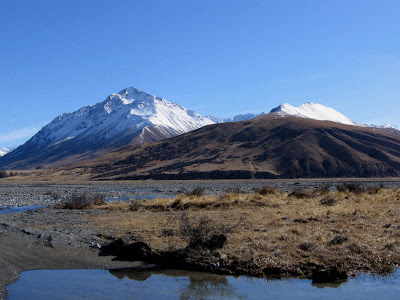getting my ferry to work in the dark.
27 February 2008
24 February 2008
19 February 2008
Wellington, hard to beat on a good day

 White circle, home of the Che Paris, the only place you could get coffee and pancakes (shock horror) and folk music after 5pm in the early 70's . (It seemed so "hip" then, but it was an overcrowded fire trap really) . I used to go there after the movies with Malcolm (the shy and retiring used car salesman) and Jim (now CEO and owner of a global computer hardware and solutions empire).
White circle, home of the Che Paris, the only place you could get coffee and pancakes (shock horror) and folk music after 5pm in the early 70's . (It seemed so "hip" then, but it was an overcrowded fire trap really) . I used to go there after the movies with Malcolm (the shy and retiring used car salesman) and Jim (now CEO and owner of a global computer hardware and solutions empire).Wellington now has more cafe's per square inch than anywhere in this country.

I remember in my student days doing a cash job in this area with a few of my Tech mates. We shoveled the fire bombed remains of a restaurant out a second story window into a rubbish skip. To this day I still use the industrial quality grill trowel I found in the rubble on my barbeque, I have found none better.

 How cool is this ?
How cool is this ?
Wellington has come along way since I left it.
Auckland could learn a thing or to about waterfront enhancement from Wellington. Outside Te Papa the museum of NZ .
Outside Te Papa the museum of NZ .

(photo's S5IS)
17 February 2008
Akaroa 2
 Cottage at Akaroa.
Cottage at Akaroa.When we were kids we spent a lot of time at Akaroa as we had friends and relatives with holiday homes there . I went back a week ago (although I have been back periodically since the 1950's) to find in shock and horror that my uncles holiday home (which my Dad helped build) has been wrecked and replaced with some modern monstrosity.
The French were a big influence on early Akaroa and if they had been quicker off the mark we might have been speaking French . Many French influenced cottages remain.
Akaroa still has a nice feel and although busy in summer weekends pedestrians still rule the streets as they did 5 decades ago, something which cannot be said of many NZ towns. For me it retains much of the charm it had for us kids. Yep its still may favorite town.

 (photo 20D 17-85)
(photo 20D 17-85) http://maps.google.com/?ie=UTF8&ll=-43.806473,172.964458&spn=0.034502,0.067978&t=h&z=14
Akaroa

 This is one of two cottages built by an early settler, Captain Bruce, for his widowed brother-in-law, John Donnet, and his nieces (John Donnet’s daughters) when they arrived from Scotland in 1855 (see Cottage, 9 Bruce Terrace).
This is one of two cottages built by an early settler, Captain Bruce, for his widowed brother-in-law, John Donnet, and his nieces (John Donnet’s daughters) when they arrived from Scotland in 1855 (see Cottage, 9 Bruce Terrace).This cottage became the home of a married daughter of John Donnet’s, Isabella, whose husband was William Bruce (who was, confusingly, not related to Captain Bruce). After William Bruce’s death, Isabella remained in the cottage until her own death in 1915.
With a sharp triangular dormer at the centre of its frontage, the cottage originally had no verandah. There were two front rooms, a kitchen in a lean-to at the rear and two small attic bedrooms. About 1922, a second building was brought onto the site by sledge from William Street and attached to the original cottage.
Many New Zealand cottages have been added to and extended in this way through the years. This cottage shares with 9 Bruce Terrace the picket fences and garden settings which, along with their ages, make Akaroa’s old cottages special.
http://www.akaroacivictrust.co.nz/fastpage/fpengine.php/link/1/templateid/36/tempidx/6/menuid/1

 The Gaiety Theatre was built as an Oddfellows Lodge, but for most of its life, since it opened on 3 April 1879, the hall has been the town’s main theatre and gathering place.
The Gaiety Theatre was built as an Oddfellows Lodge, but for most of its life, since it opened on 3 April 1879, the hall has been the town’s main theatre and gathering place.An imposing architectural presence on Rue Jolie, the building also has an important place in the social history of Akaroa. Deigned by a Christchurch architect, A.W. Simpson, the façade has Italianate/Classical detailing usually executed in stone but here entirely of wood. The detail includes pilasters with Corinthian capitals, bracketed window hoods and a prominent triangular pediment. Behind this façade, the building is a plain wooden shed.
Through the years, the building has been the scene of dances, meetings, theatrical performances and movie showings. By the late 20th century it had become dilapidated, but a group of three local women took the venerable building in hand. The Gaiety Trust raised more than $300,000 to renovate the building. Wonderfully restored and brought back to life, it is once again a popular venue for community events.
The Friends of the Gaiety continue to oversee maintenance of the building.
http://www.akaroacivictrust.co.nz/fastpage/fpengine.php/link/1/templateid/14/tempidx/2/menuid/1

13 February 2008
Subscribe to:
Comments (Atom)










